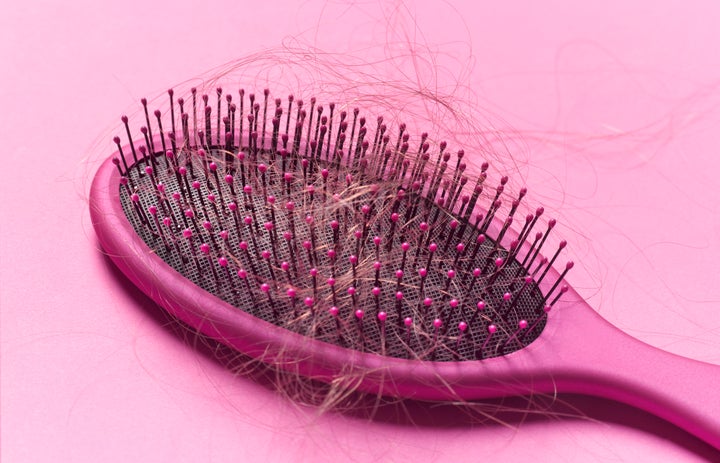If you’ve recently noticed more hairs than usual in your brush or that a shower leaves you with a blocked plughole, don’t panic just yet – it could be a sign of the changing weather.
It’s usual for women to experience some hair loss each day, according to Dr Nicola Clayton of the British Association of Dermatologists, but this can increase during autumn - most commonly between September and November. “The reason being that hair follicles frequently enter their resting (telogen) phase mid-summer,” she says.
This is thought to be explained by human evolution. Traditionally, increased hair growth in the winter would help protect against the cold, and in the summer greater hair density would protect the scalp from ultraviolet rays.
While most instances of hair shedding are relatively short-lived, lasting between a few weeks and a few months, for some women hair loss persists throughout the year. So how much hair loss is “normal” and when should we be seeking help?

The average amount of hair loss is estimated to be 100 hairs per day, regardless of hair type, according to Dr Clayton. This will look different for different women: a woman with long, thick, or coarse hair may see this as a clump, whereas someone with shorter, thinner, straight hair will have smaller mound.
But some women may lose a lot more. Generalised excessive hair shedding is called telogen effluvium – this is where the natural hair cycle is disrupted, resulting in more hairs than normal falling out and resting, rather than growing.
Post-partum is the most common scenario for this, although this usually resolves within six months unless there is an ongoing contributing abnormality such as iron deficiency. “Other causes include nutritional deficiencies such as vitamin D, thyroid gland abnormalities, stress, crash dieting and other acute episodes of ill health,” explains Dr Clayton.
It’s worth noting that dyeing hair, swimming regularly in chlorinated water and applying heat or chemical relaxant treatments can damage the hair leading to breakage. This may contribute to hair feeling thinner, but Dr Clayton says this hair loss is not coming from the root and is not health-related.
Other more severe forms of hair loss include:
:: Androgenic alopecia: widespread thinning across the scalp, usually caused by genetic and hormonal factors.
:: Alopecia areata: progressive bald patches, thought to be caused by the immune system mistakingly attacking hair follicles.
You should visit your GP or a dermatologist specialising in hair loss if you believe you may be experiencing one of these conditions, or if generalised hair loss persists. They will be able to refer you for tests to address possible underlying causes, for example a blood test can identify deficiencies or abnormal thyroid function, making them easier to treat.
But if you’re looking for quick practical tips for seasonal hair loss, Dr Clayton recommends being mindful of overall environmental damage. “When the hair is dry [and prone to breaking] I recommend leaving a conditioner in overnight and washing out the following morning, which can be repeated as required,” she advises.
A well-rounded diet with iron and vitamin C supplements for vegetarians should also help. For chronic telogen effluvium, when no exact cause is identified, Dr Clayton recommends trying Viviscal hair growing supplements and treatments, which are available from most major pharmacies.